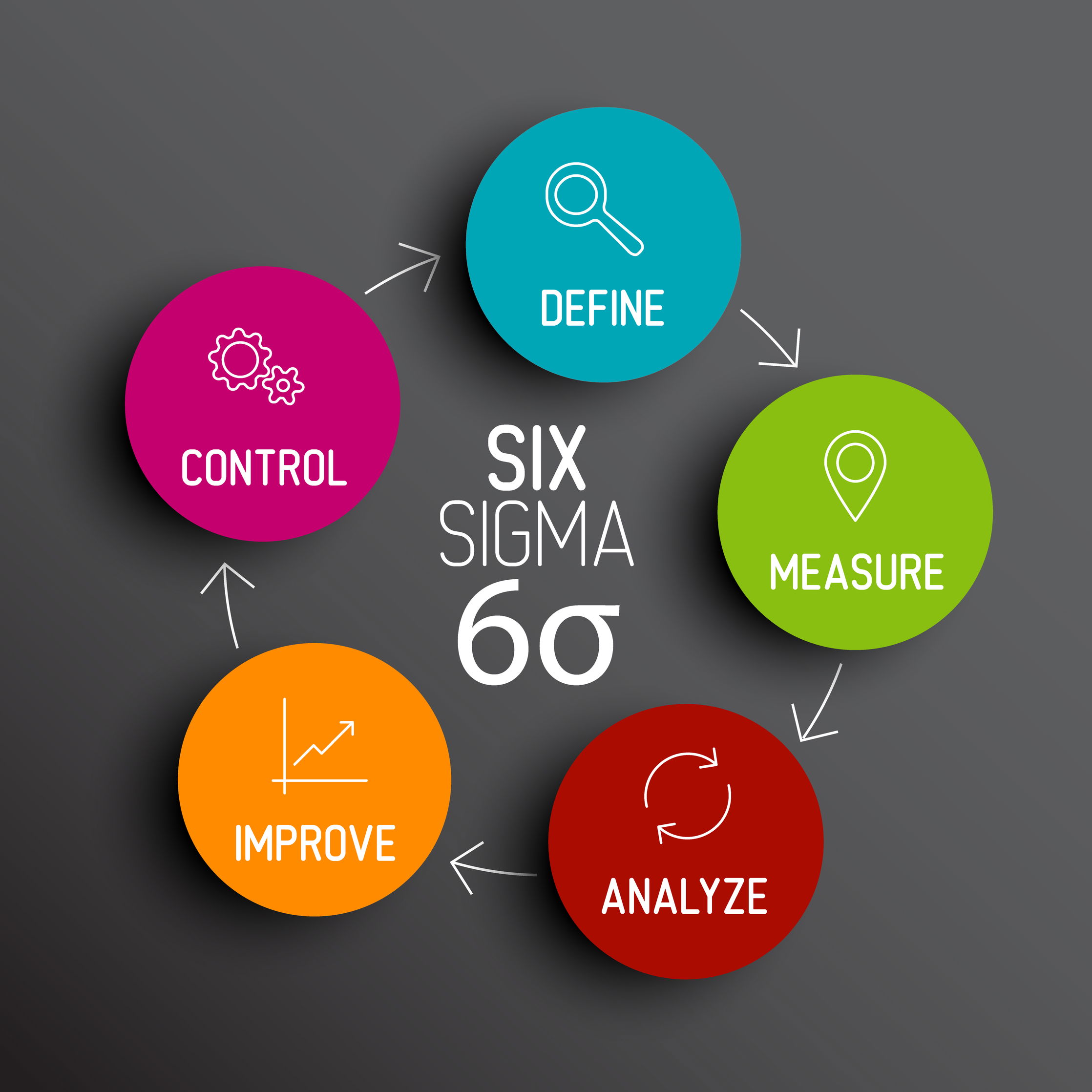How is Six Sigma - project management tools working?
by Prof. Robert Somogyi
The first question is, why and where we need Project management? Project management principles and techniques can be applied to many aspects of daily home work, such as Home renovation or remodeling, moving to a new home, planning a party or event, planning a vacation and a lot more.
Saying this we can recognize that Project management is important for many reasons and almost all fields of activities. All this activities have the following common:
- Achieving goals: Project management helps organizations achieve their goals and objectives by effectively planning, executing, and monitoring projects. A project manager can help ensure that all project activities are aligned with the organization's goals.
- Meeting deadlines: Projects have deadlines, and project management helps ensure that those deadlines are met. Project managers use tools and techniques to schedule and track project activities, and to identify and mitigate risks that could impact the project schedule.
- Managing resources: Projects often require the use of limited resources, such as time, money, and people. Project management helps organizations allocate these resources effectively and efficiently, and to ensure that resources are not wasted.
- Managing risks: Projects are inherently risky, and project management helps organizations identify and mitigate those risks. By proactively managing risks, project managers can help ensure that projects are completed successfully.
- Ensuring quality: Project management helps ensure that project deliverables meet quality standards. Project managers can define quality standards, monitor project activities to ensure compliance with those standards, and implement corrective actions when necessary.
- Enhancing communication: Project management facilitates communication between project team members, stakeholders, and other parties involved in the project. Effective communication helps ensure that everyone is aligned on project goals, timelines, and deliverables.
This means, project management helps organizations deliver projects on time, within budget, and to the required quality standards. It enables organizations to achieve their goals and objectives, and to improve their overall performance.

But what´s is SIX SIGMA in project management?
Six Sigma is still widely used as a tool for improving the quality of products and services in many industries around the world. While its popularity may have waned somewhat in recent years, Six Sigma remains a powerful methodology for identifying and eliminating defects, reducing variability, and improving processes. In fact, many organizations have built entire quality management systems around the principles of Six Sigma, and have achieved significant improvements in quality, productivity, and profitability as a result.
Some organizations have even developed their own variants of the methodology, such as Lean Six Sigma, which combines Six Sigma with Lean manufacturing principles to create a more comprehensive approach to process improvement.While Six Sigma may not be as trendy as it was in the past, it remains a valuable tool for organizations that are committed to continuous improvement and quality management. Its principles and techniques have stood the test of time and continue to be relevant in today's rapidly changing business environment.
- Six Sigma has been adopted by many large organizations around the world, including Motorola, General Electric, and Ford. In fact, according to a survey by the American Society for Quality (ASQ), 82% of Fortune 100 companies use Six Sigma.
- The Six Sigma methodology is based on statistical analysis and relies heavily on data to identify and eliminate defects. This means that organizations that use Six Sigma tend to be very data-driven and analytical in their approach to quality management.
- The Six Sigma methodology has several levels of certification, ranging from Yellow Belt to Master Black Belt. According to the ASQ, more than 1 million people have been trained in Six Sigma methodologies, and thousands of individuals have achieved certification at various levels.
- Six Sigma has been shown to be effective in improving quality, reducing defects, and increasing customer satisfaction. For example, a study by the University of Manchester found that organizations that implemented Six Sigma saw an average improvement in defect rates of 44%.

SIX SIGMA use in EU Projects
Six Sigma is a methodology that can be applied to a wide range of projects, including those funded by the European Union (EU). The EU provides funding for a variety of projects across different industries and sectors, and Six Sigma can be a useful tool for improving the quality and efficiency of these projects.
Six Sigma can be particularly useful in EU projects that involve manufacturing, logistics, or service delivery, as these areas often involve complex processes that can benefit from process improvement. By applying Six Sigma methodology, project managers can identify areas where processes can be streamlined, eliminate waste and inefficiencies, and reduce defects and errors.Additionally, Six Sigma can help EU project managers to improve communication and collaboration among team members, stakeholders, and partners, which can be particularly important in large-scale projects that involve multiple organizations and stakeholders. While Six Sigma is not a requirement for EU projects, it can be a valuable tool for improving the quality and efficiency of projects and ensuring their success.
Overall, Six Sigma has a strong track record of success in improving quality, reducing costs, and increasing customer satisfaction. While it may not be the right fit for every organization, it has proven to be a valuable tool for many companies around the world.
Six Sigma is a methodology that is used to improve the quality of products and services by reducing defects and minimizing variation. The Six Sigma methodology was developed by Motorola in the mid-1980s and has since been adopted by many organizations around the world.The Six Sigma methodology is based on a set of principles and tools that are designed to identify and eliminate defects in processes. These principles include:
- Defining the problem: The first step in the Six Sigma methodology is to define the problem or opportunity for improvement. This involves identifying the customer's needs and expectations, and understanding the process that needs to be improved.
- Measuring the process: Once the problem has been defined, the next step is to measure the process. This involves collecting data on the process and identifying any areas of variation or defects.
- Analyzing the data: The data that has been collected is analyzed to identify the root cause of the defects or variation. This involves using statistical tools and techniques to identify patterns and trends in the data.
- Improving the process: Once the root cause of the defects has been identified, the next step is to implement solutions to improve the process. This may involve redesigning the process, improving the quality of materials or equipment, or retraining staff.
- Controlling the process: The final step in the Six Sigma methodology is to control the process to ensure that the improvements are sustained over time. This involves implementing control measures to monitor the process and ensure that it continues to meet the required quality standards.

There are many benefits of Six Sigma such as decreasing waste, increasing efficiency, reducing errors, reducing legal risk, applying it to any industry, and making more money. Six Sigma ideology is aimed to help you and your company optimize processes to decrease your total waste. Six Sigma certification can be beneficial to both companies and individuals because of its emphasis on quality and efficiency. Becoming Six Sigma certified can be an effective way to gain experience in project management and advance your career. Companies that use Six Sigma principles may benefit from increased sales and customer satisfaction.
Of course as usual in all methods, there are some pros and cons.
Pros:
- Focuses on quality: Six Sigma is designed to improve the quality of products and services, which can help organizations to improve customer satisfaction, reduce costs, and increase profitability.
- Data-driven: Six Sigma relies on statistical analysis and other data-driven tools to identify and eliminate defects, which can lead to more informed decision-making and improved performance.
- Provides a structured approach: Six Sigma provides a structured approach to problem-solving and process improvement, which can help organizations to standardize their processes and create a culture of continuous improvement.
- Widely recognized: Six Sigma is widely recognized and used by many large organizations around the world, which can make it easier for companies to hire qualified professionals and implement the methodology.
Cons:
- Can be time-consuming: Six Sigma requires a significant investment of time and resources, including training and certification, which can be a barrier to implementation for some organizations.
- Can be complex: Six Sigma is a complex methodology that can be difficult to understand and implement, especially for smaller organizations with limited resources.
- May not be a good fit for every organization: Six Sigma is not a one-size-fits-all solution, and may not be the best approach for every organization or every problem.
- Can be rigid: Some critics of Six Sigma argue that the methodology can be too rigid and focused on process improvement at the expense of other important factors, such as innovation and creativity.
Six Sigma can be a valuable tool for improving quality and efficiency in organizations, but it may not be the best fit for every situation. Organizations considering implementing Six Sigma should carefully consider the pros and cons and determine whether the methodology aligns with their goals and culture.
The Six Sigma methodology uses a set of tools and techniques to support each of these steps. These tools include statistical process control, process mapping, root cause analysis, and control charts.The Six Sigma methodology has been shown to be effective in improving the quality of products and services, reducing costs, and increasing customer satisfaction. It is widely used in manufacturing, healthcare, and service industries, and has become a standard approach to quality improvement in many organizations around the world.
